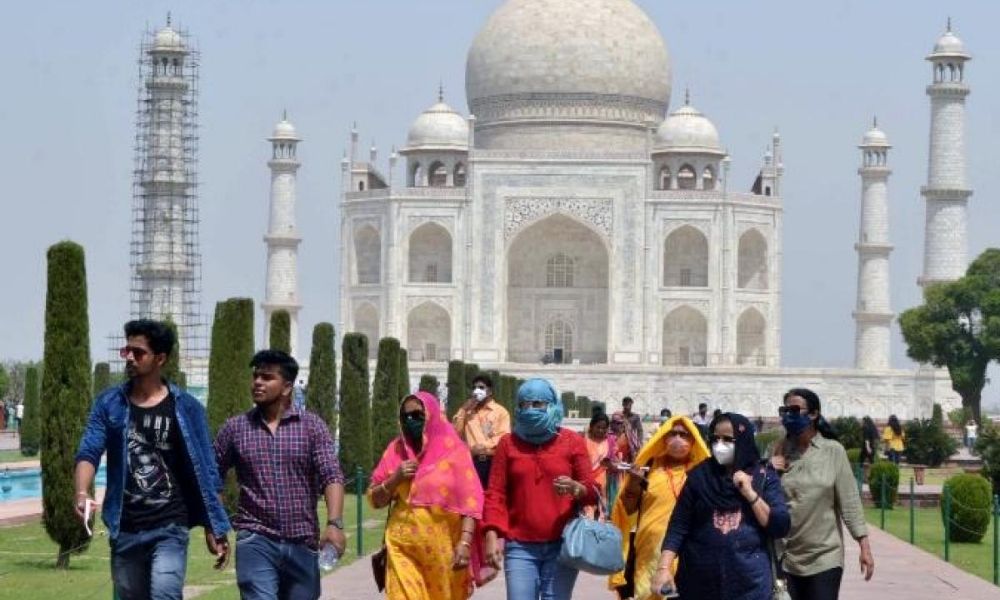
Picture Credit: ANI
Tourism Sector Suffers Massive Blow Due To COVID-Induced Travel Restrictions
India, 5 Jun 2021 9:28 AM GMT
Editor : Sanal M Sudevan |
Keen to explore new things and learn something new every day in the field of jounalism.
Creatives : Rishab Shaju
A passionate, confident, and energetic student, I am a workaholic with an interest in the field of Broadcast Journalism. I always make sure to meet my deadlines and can work well under pressure. Other than journalism, I am also interested in the field of Psychology and Literature. Timeliness and honesty are the two most important factors that define me. If not journalism, I would want to be a professor or a social worker.
The tourism sector is one among the many sectors that is undergoing one of the biggest existential crises. Today, nearly 30% of inbound tour operators in India may shut their shops permanently. However, this figure could go up to 60 to 70 per cent as per estimates.
The travel and tourism sector of India is an integral part of generating revenue in the country. In addition to this, the sector plays a significant role as an economic multiplier in creating job opportunities at a rapid rate. The travel sector has a substantial sectoral output in MSMEs, with people particularly from prominent cities to small towns and villages. According to a recent report by World Travel & Tourism Council, only 12.1 per cent of women are employed in this sector. It has also been found that there could be an 11 per cent increase in the GDP of countries around the world if gender gaps are addressed. As of 2019, tourism generated $194 billion or 6.8% of India's total GDP and helped support 39.80 million jobs which are 8% of its total employment. Nevertheless, with the onset of the COVID-19 pandemic, there has been a drastic change in this industry.
The tourism sector is one of the many sectors that is undergoing one of the biggest existential crises. Today, nearly 30% of inbound tour operators in India may shut their shops permanently. However, this figure could go up to 60 to 70 per cent as per estimates. With restrictions on international travels and no tourism in the country, there have also been severe effects on the revenues of tour operators.
The organized sector alone is likely to lose $25 billion. According to another study, occupancy was at its peak in January 2020 at 80 per cent followed by a 10% dip in February. It then came down to 45% in March and rested at 7% in April. From the months of May-August, the occupancy was between 10-22%. However, with the implementation of schemes like SEIS (Service Exports from India Scheme) and MICE (Meetings, incentives, conferencing, exhibitions), India has shown a substantial improvement in the travel and tourism sector. The SEIS has given scope for offering packages at competitive prices and attracting more visitors to the country.
"The Services Exports Promotion Council has made representations to both the Finance and Commerce Ministries for the release of SEIS for the year 2019-20. We have conveyed repeatedly that service sectors, especially hospitality, medical and education have suffered hugely during the pandemic and any relief would be welcome. In order to ensure that benefit goes to medium and small service providers, we have suggested a cap so that no exporter avails of a benefit of more than 5 crores. The government has announced many schemes for the manufacturing sector but none for services, even though this sector has registered consistent growth and has been positive," said Maneck Davar, Chairman of SPEC, as reported by Financial Express.
As of now, the revenues have choked and the operators of travel companies are seeking relief from the government in the form of the re-implementation of SEIS. With the continuation of SEIS, immediate relief can be given to operators and millions of jobs could be saved as soon as the pandemic subsides, which is unpredictable as of now.
Also Read: Government To Rethink Decision On Tax Waiver For COVID-19 Supplies
 All section
All section














